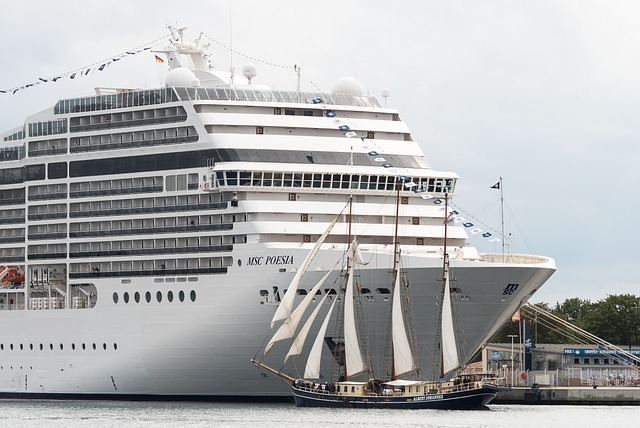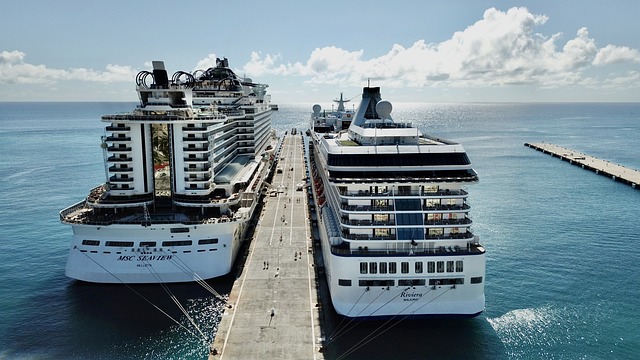Choosing the right boat battery is essential for optimal performance and reliability in various maritime conditions. Boat batteries come in two main types: starter batteries for high amperage needs and deep-cycle batteries for powering electrical systems, with key attributes including capacity (Ah), reserve capacity (RC), and cranking amps (CA). When selecting a battery, consider its capacity for output, reserve capacity for run time after discharge, and cranking amps for starting power. Additionally, factors like temperature tolerance and maintenance-free design are crucial for performance in different climates. Proper storage is equally important; keep your boat battery at a cool, dry place (15°C to 20°C) away from direct sunlight and extreme temperatures to prevent damage. Regularly charge the battery between 50% and 75% capacity and perform equalization charges to maintain plate integrity and electrolyte distribution. Check water levels in flooded lead-acid batteries to avoid drying out, which impairs function. A marine battery maintainer can automate this process. For longevity, consistently use a marine-specific charger that matches your battery type and avoids overcharging. Plan for regular charging after every trip or once a month if stored, using a charger with an automatic voltage reduction feature to safeguard against overcharging. Maintaining a full charge ensures the battery is ready for use and extends its life. Taking these steps will guarantee that your boat battery remains reliable and functional for all your maritime needs.
When it comes to maintaining your vessel’s power supply, the health of your boat battery is paramount. This article delves into the Top 10 Tips for Battery Care and Longevity, ensuring you maximize your marine battery’s performance. From selecting the right type of boat battery suited to your boating needs to implementing effective maintenance charging practices, we cover it all. Understand the nuances that distinguish different batteries, learn optimal storage strategies to prolong life, and become adept at troubleshooting issues that may arise. Knowledge is the key to a reliable battery, and with our expert advice, you’ll navigate the complexities of boat battery care with ease. Keep your boat’s power source in peak condition with these indispensable tips.
- Understanding Your Boat Battery: Types and Features for Optimal Performance
- Storage Strategies to Extend Your Boat Battery's Life
- Charging Your Boat Battery Right: Tips for Effective Maintenance Charging
- Troubleshooting and Replacement: Knowing When It's Time to Say Goodbye to Your Old Boat Battery
Understanding Your Boat Battery: Types and Features for Optimal Performance

When it comes to maintaining the optimal performance of your vessel, understanding your boat battery is paramount. Boat batteries are specialized devices designed to withstand the unique challenges posed by maritime environments. There are two primary types of boat batteries: starter batteries and deep-cycle batteries. Starter batteries, also known as cranking batteries, are engineered to deliver high amperage for a short duration to quickly start your boat’s engine. In contrast, deep-cycle batteries are designed to provide consistent power over an extended period, making them ideal for running onboard electrical systems and for applications that require frequent discharging and recharging.
Key features to consider when selecting a boat battery include the capacity in ampere-hours (Ah), reserve capacity (RC), and cranking amps (CA). The capacity determines how much power the battery can deliver at a particular rate before being fully discharged. Reserve capacity indicates, in minutes, how long a fully charged battery can maintain 1.75 volts or greater at 80°F (27°C) after being discharged to 10.5 volts. Meanwhile, cranking amps measure the battery’s ability to deliver high current for a short time at a specific temperature, which is critical for starting your boat’s engine. Additionally, factors such as temperature tolerance and maintenance-free construction should be taken into account, especially given the varying conditions on the water. Investing in a quality battery with the right features will ensure that you have reliable power when you need it most, enhancing both safety and convenience during your boating adventures.
Storage Strategies to Extend Your Boat Battery's Life

When storing your boat battery for an extended period, implementing effective storage strategies is paramount to ensuring its longevity and optimal performance upon return to service. To begin with, keep the battery in a cool, dry place, ideally at a temperature between 15°C and 20°C (59°F to 68°F). Extreme temperatures can negatively affect the battery’s chemical composition, leading to reduced capacity or even sulfation, which shortens its lifespan. If possible, choose a storage location that offers some natural light but is protected from direct sunlight and extreme cold.
Secondly, it’s advisable to keep your boat battery charged between 50% and 75% of its capacity during storage. This can be achieved by regularly charging the battery or using a battery maintainer designed for marine batteries. A partial state of charge prevents the formation of excessive sulfation, which occurs when a lead-acid battery is discharged deeply or left fully charged over an extended period. Additionally, periodic equalization charges can help maintain the plates’ condition and ensure that the electrolyte solution remains well distributed, further contributing to the battery’s health. Regular inspection of the water levels in flooded lead-acid batteries is also recommended to prevent drying out, which can impair battery function. By adhering to these storage strategies, you can significantly extend the life of your boat battery and ensure it operates at its best when you next set sail.
Charging Your Boat Battery Right: Tips for Effective Maintenance Charging

To maintain the health and longevity of your boat battery, it’s crucial to adopt a charging regimen that balances efficiency with care. Consistent charging is vital for keeping the battery in optimal condition, as prolonged disuse can drain its charge and potentially lead to sulfation, which impairs battery performance. When charging your boat battery, avoid overcharging, as this can cause excessive heat and reduce the battery’s lifespan. Instead, opt for a charger with an automatic voltage reduction feature, which slows down the charge rate as the battery nears full capacity, preventing damage from overcharging.
Charging your boat battery should be done using a compatible marine battery charger designed for this purpose. These chargers are engineered to provide the correct amperage and voltage for your specific battery type, which is different from automotive batteries due to the demands of maritime environments. Regularly scheduled charging sessions, such as after every outing or once a month if the boat is stored, can help maintain a full charge and ensure that the battery is always ready for use. Additionally, using a charger with a maintenance mode can top up the battery gradually, keeping it charged without the risk of overcharging. Proper charging practices not only extend the life of your boat battery but also ensure its reliability when you need it most on the water.
Troubleshooting and Replacement: Knowing When It's Time to Say Goodbye to Your Old Boat Battery

When maintaining a boat battery, understanding its type, features, and proper charging techniques are crucial for ensuring its longevity. This article has outlined the top strategies for storage, maintenance charging, and troubleshooting to maximize your boat battery’s life span. By following these expert tips, from selecting the right battery to knowing when it’s time for a replacement, you can safeguard your investment and avoid the inconvenience of a dead battery on the water. Remember, the health of your boat battery is key to your boating experiences, so take these recommendations seriously to enjoy smooth sailing for years to come.
